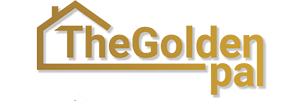Accurate cost accounting directly impacts profit margins in the Chinese import business. This article breaks down cost components through real cases, analyzes key influencing factors, and provides actionable cost-reduction strategies to help you avoid “cost black holes” and maximize profits.
1. Full Analysis of Cost Components: Hidden Expenses from Factory to Warehouse
1. Product Cost: The ‘Flexible Space’ in Procurement
- Core Variables:
• Quality Tier: For example, high-end Bluetooth earphones with Qualcomm chips cost ~$50/pair, while public-version models are only $15/pair – a 3.3x price difference;
• Purchase Volume: Bulk-purchasing 100,000 T-shirts may secure a factory price of $8/piece, while the unit price could rise to $12/piece for a 1,000-piece order – a 50% difference;
• Trade Terms: EXW (Ex Works) requires self-responsible pick-up fees, while FOB (Free on Board) includes domestic logistics. The FOB price of the same product is typically 3%-5% higher than EXW.
2. Transportation Costs: The ‘Major Expense’ Accounting for 20%-40% of Total Costs
- Case Study: Sea Freight (China to West Coast of the U.S.)Cost Type 20 ft Container Cost 40 ft Container Cost Notes Base Freight $ 1,800- $ 2,200 $ 3,200- $ 3,800 Peak-season fluctuations up to ±30%Surcharges$300-$500$500-$800Including bunker adjustment factor, peak-season surcharges, etc.Insurance$50-$100$100-$200Insured at 0.3%-0.5% of CIF value
3. Tariffs and VAT: Policy-Sensitive Costs
- Tariff Calculation Example:
• Imported men’s leather shoes (HS code 64039900), with MFN tariff rates: 10% in China, 8% in the EU, and 11% in the U.S. (assuming FOB price $10/pair, freight $2/pair):- China import tariff: ($10+$2)×10% = $1.2/pair
- EU import tariff: ($10+$2)×8% = $0.96/pair
- VAT: China levies a uniform 13% (dutiable value + tariff), i.e., ($ 12 + $ 1.2)×13% = $1.72/pair.
4. Other Costs:
- Warehousing fees: Overseas warehouse daily rates are ~$0.5-$1/cubic meter; long-term storage (over 90 days) may incur a 30% surcharge.
- Customs clearance fees: Agent fees are ~$100-$300 per shipment, including document processing and customs communication.
2. Cost Influencing Factors: Decision Logic Behind the Data
1. ‘Cost-Timeliness’ Trade-off in Transportation Mode Selection
- Urgent Orders: Air freight costs 5- 8x sea freight but shortens delivery by 30 days, suitable for seasonal goods (e.g., Christmas gifts) to avoid stockout losses of 20%-30% of product value;
- Regular Procurement: Less-than-container-load (LCL) shipping suits small batches (<15 cubic meters) but incurs LCL fees (CFS) of $50-$100/cubic meter, potentially offsetting freight advantages.
2. ‘Hidden Thresholds’ of Tariff Policies
- RCEP Dividends: Japan’s 8.5% tariff on Chinese clothing can be reduced to 0% with a Certificate of Origin (FORM R), saving ~$85,000 in tariffs for a single 100,000-piece order;
- Anti-Dumping Duties: The EU’s 47.6% anti-dumping duty on Chinese solar modules forces re-export via third countries (e.g., Malaysia), adding 5%-8% transit costs.
3. ‘Silent Erosion’ of Exchange Rate Fluctuations
- Case: A company locked a $1M order at an exchange rate of 6.8 (¥6.8M) but paid ¥7M when the rate rose to 7.0, incurring an extra ¥200,000 loss, equivalent to a 5% profit reduction.
3. Cost Reduction Strategies: Three-Dimensional Optimization from Supply Chain to Policies
1. Procurement: Building a ‘Price Moat’ Through Long-Term Partnerships
- Tiered Pricing: Negotiate annual purchase volume targets with suppliers for a 3%-5% price reduction in the following year;
- Joint Procurement: 3-5 companies in the same industry form a purchasing alliance to concentrate order volumes and increase bargaining chips. A furniture purchasing alliance reduced the purchase price of sofas by 12% through this model.
2. Logistics: Dynamic Planning as a ‘Cost Scalpel’
- Multimodal Transport: Combine rail and sea freight for China-Europe routes, 10 days faster than pure sea freight with only a 15% cost increase, suitable for high-turnover goods.
- Reverse Logistics Optimization: Utilize discounted return empty container rates (60% of one-way costs) for China-Europe rail to reduce cross-border e-commerce return logistics costs.
3. Policies: ‘Compliant Tax Saving’ by Leveraging Regulations
- Origin Planning: Set up assembly plants in RCEP member states (e.g., Vietnam) to process Chinese components into semi-finished products (with a value-added rate >40%) for tariff reduction;
- Bonded Warehousing: Store goods in the importing country’s bonded warehouse and delay customs duties until sale (e.g., U.S. bonded warehouses allow storage for up to 5 years).
4. Financial Instruments: ‘Cost Safeguards’ Against Risks
- Forward Exchange Contracts: Lock in 3-6 month exchange rates for 0.1%-0.3% of transaction value, covering over 90% of exchange rate risks;
- Supply Chain Finance: Use platform factoring services (e.g., Alibaba Trade Assurance Financing) to liquidate accounts receivable early at an annual cost of 4%-6%, easing cash flow pressures.
Key Tools Recommendation
- Tariff Inquiry:
• China: https://www.customs.gov.cn (Commodity Classification Pre-Ruling System)
• EU: https://ec.europa.eu/taxation_customs (TARIC Database) - Exchange Rate Management: Bank of China’s online “Forward Foreign Exchange” platform
- Cost Calculation Template: Download the Import Cost Calculator from Alibaba International Station’s “Tool Center.”
Next Preview: How to select reliable partners from millions of Chinese suppliers? We’ll reveal qualification review, factory audit key points, and negotiation techniques – stay tuned!

